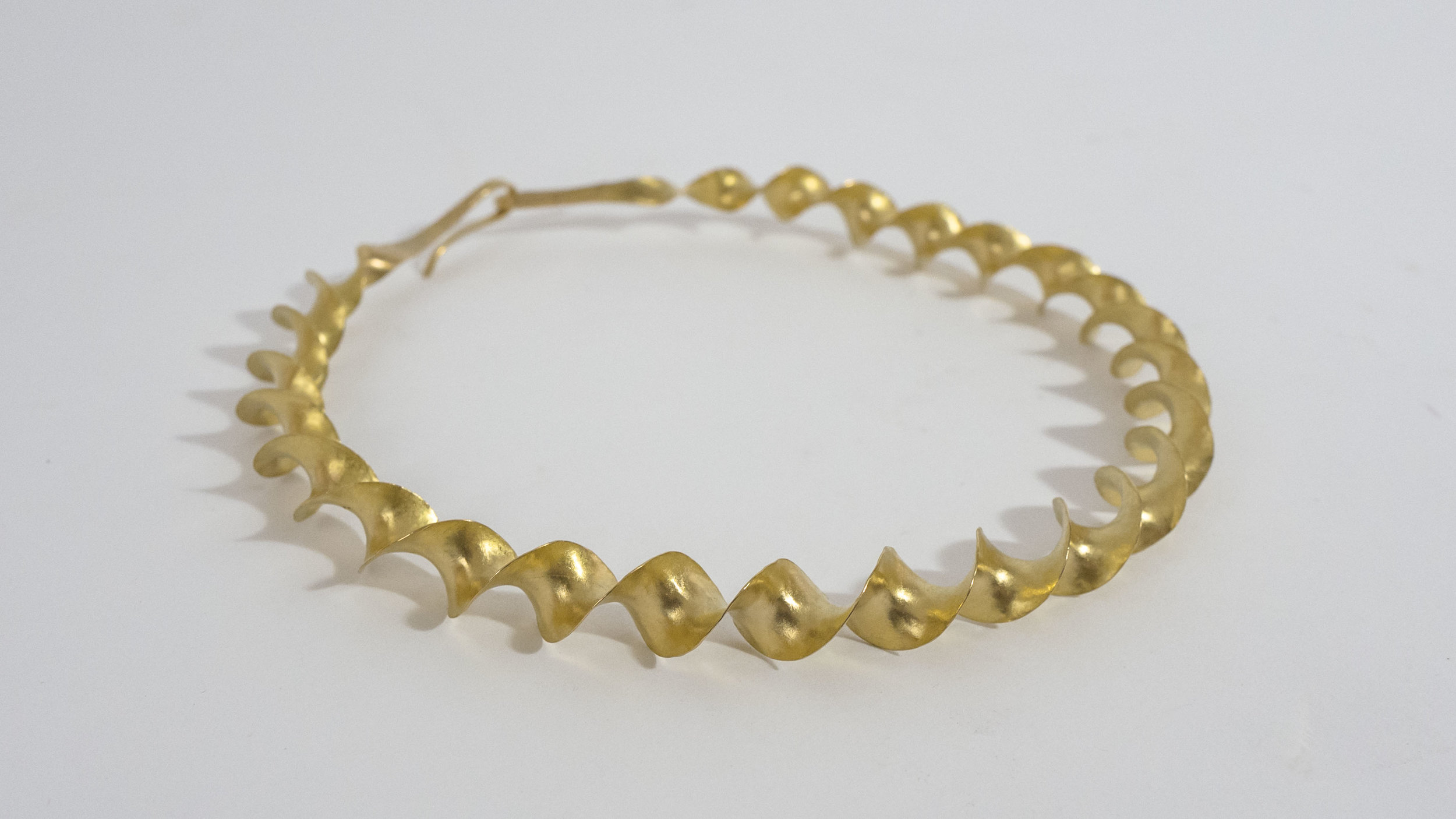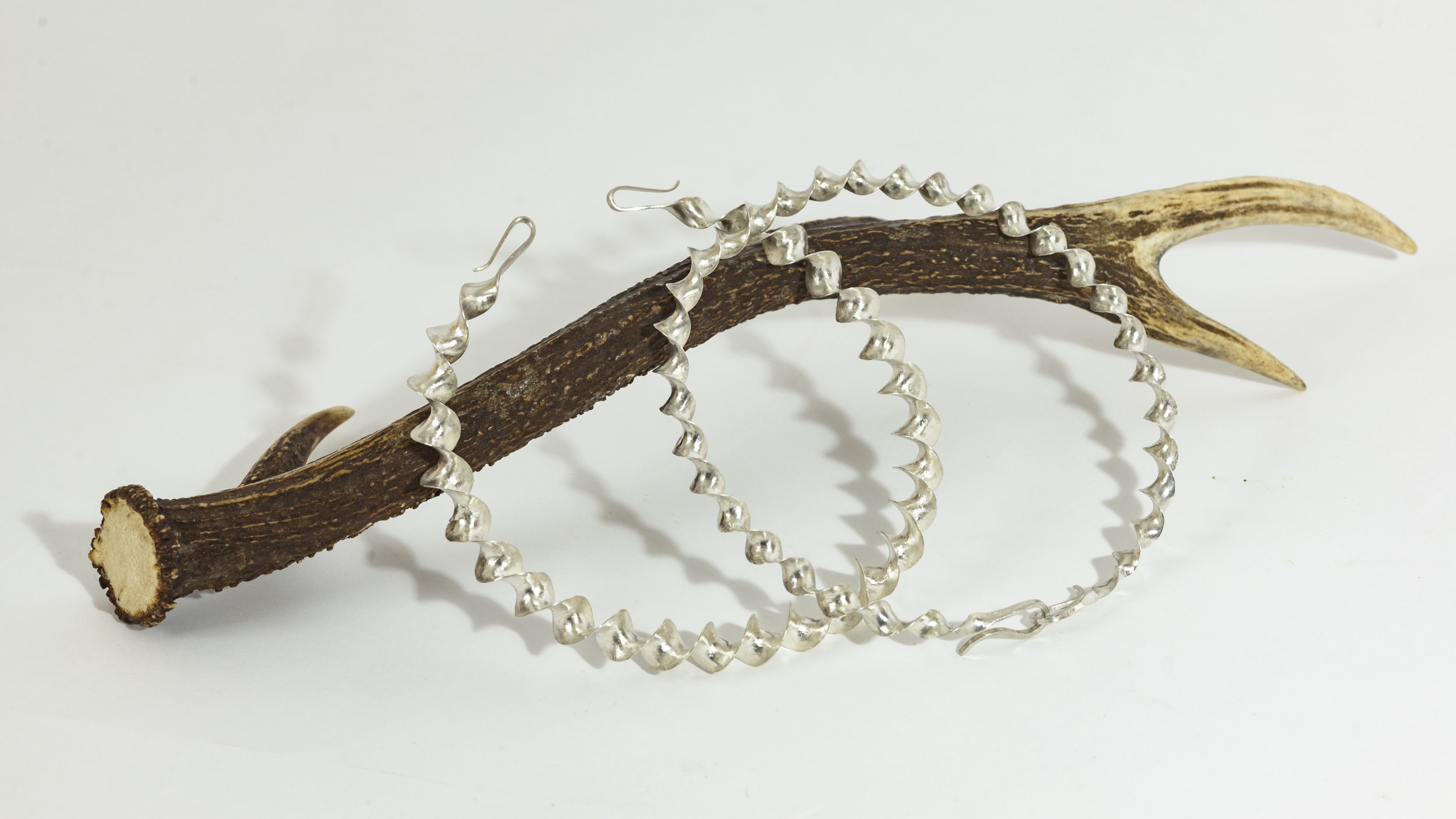

Ribbon Torcs made in silver and 22ct gold.
The Coulter and Lewin Torcs: A Present Day Iron Age Adventure
I first saw the Iron Age Coulter ribbon torc in 2015 in a photograph on the wall of the Biggar Museum (it is now in the National Museum of Scotland in Edinburgh). It is a rare and extraordinarily beautiful piece – surviving several thousand years against enormous odds. I kept thinking about it, and its history, and one day decided I’d like to give one to my wife Jenny.
I wanted to commission a Scottish goldsmith to recreate it, and my research led me to Linda, whose workshop is only a few miles from where the torc was found in 1860. We met in London, where she and Adrian were exhibiting, by when she had researched what little material exists on how ribbon torcs were made. It quickly became clear that there was far more to the process than I had imagined (for details, see Linda’s own notes). She had with her a few copper and silver trial runs, and gave me an insight into just what the job would entail.
It sounded painstaking and time-consuming – and it was. But luckily I didn’t have to do any of the work. Linda took on the commission with a mixture of enthusiasm and trepidation. No-one in Scotland had been making these torcs for thousands of years, but Linda’s was able to consult with Brian Clark in Ireland, who had done a lot of work on the Irish torcs in Dublin. There was enough source material available for Linda to get a detailed understanding of the techniques involved – but by no means everything. As the work progressed, she had to rediscover for herself whatever knowledge had been lost in the millennia since the Coulter Torc itself was created.
The process took several months, and I know many more dozens of hours than we had anticipated. And the result is spectacular. Linda actually made two “Coulter” torcs, and we visited her workshop in July 2017 so that Jenny could choose which one was going to be hers. She was, understandably, thrilled with the result – as am I.
I can’t speak highly enough of Linda’s work – and I should also say what a pleasure it was to collaborate with her on this highly enjoyable (and highly demanding) project. What we have as a result is an exquisite family heirloom, as sumptuous as its original. Whether anyone else could have carried out this work so well I can’t say, but I can state with complete confidence that no-one could have done it better. Because the result is perfect.
Thank you, Linda. This was fun.
And I couldn’t be more pleased with the masterpiece that you have created for us out of the mists of history.
With warmest best wishes,
Richard Sparks